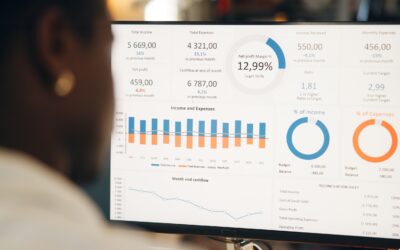What If You Could See the Future?
You probably can’t read palms, but your data can. Predictive analytics isn’t about magic—it’s about math that feels like magic. Imagine being able to forecast which donors are most likely to give again, which campaigns will outperform the rest, or which channels are about to dry up. That’s not luck. That’s data with a purpose.
And for nonprofits, it’s the difference between chasing donations and confidently steering toward them.
Why Nonprofits Lag Behind on Data
Let’s be blunt: most nonprofits collect data like hoarders collect junk. Piles of spreadsheets, donor lists, event attendance logs—zero structure, no insight. It’s not your fault. For years, “analytics” felt like a corporate buzzword, something only Fortune 500s cared about. But the truth? Every donor interaction tells a story. Predictive analytics helps you *listen* to it.
The real issue isn’t data scarcity—it’s translation. You’ve got information. You just need a way to turn it into foresight.
The Difference Between Reporting and Predicting
Reports tell you what happened. Predictive analytics tells you what will happen next. Think of it like the difference between reading a weather recap and checking tomorrow’s forecast. One is history; the other saves you from getting soaked.
Tools built for nonprofits now make this surprisingly accessible. You don’t need a PhD in statistics or a million-dollar CRM. You just need to start asking better questions:
- Who is most likely to give again within 90 days?
- Which campaign style (video, story-driven, peer-to-peer) performs best with our audience?
- How does timing impact average donation size?
These aren’t abstract curiosities—they’re decisions you can act on. And as Nonprofit Analytics 101 explains, the goal isn’t just tracking metrics. It’s connecting them to action.
How Predictive Analytics Actually Works
Here’s the non-boring version: predictive analytics uses your existing donor data—giving frequency, amount, timing, engagement patterns—to forecast future behavior. It’s pattern recognition at scale. The same kind of logic that helps Netflix suggest your next binge now helps nonprofits predict their next donation.
Let’s break it down:
- Data Collection: You already have it. Every gift, event sign-up, and email click counts.
- Data Cleaning: Remove duplicates, fix typos, and make sure “John S.” and “John Smith” are the same guy. This part matters more than any fancy algorithm.
- Modeling: Software analyzes correlations—like donors who gave twice in six months have a 72% chance of giving again this year.
- Scoring: It ranks your supporters by likelihood to act—donate, lapse, or upgrade.
You don’t need to code it yourself. Even basic CRM integrations now run predictive models under the hood. The barrier to entry isn’t tech—it’s mindset.
The Real-World Payoff
So, what does this look like in the wild? Picture this: your organization is planning its annual gala. Instead of blasting invites to your entire list, predictive analytics highlights 300 donors who’ve historically responded to high-touch events. You focus your efforts there—and attendance spikes.
Or, say your email open rates dropped. Your system flags donors who haven’t engaged in 60 days. You send them a reactivation message tailored to their past giving history. Boom—25% of them come back.
That’s not theory. It’s the measurable magic of targeted prediction.
What You’ll Need to Start
You don’t have to build a data lab. Start small and iterate. Three essentials get you 80% of the value:
- A Solid CRM: You can’t predict what you can’t track. If you’re stuck between options, this guide on donor management vs. CRM integrations breaks down what actually matters.
- Consistent Data Entry: Garbage in, garbage out. Train your team to enter notes, categorize gifts, and update contact info. Predictive analytics can’t fix chaos.
- Clear Goals: Decide what you want to forecast. Future giving? Event attendance? Recurring donor growth? Without a north star, you’ll drown in numbers.
The best part? You can layer predictive analytics onto tools you already use—no system overhaul required.
When Small Data Beats Big Data
A myth worth busting: you don’t need massive datasets to make meaningful predictions. Even 500 past transactions can reveal giving cycles or seasonal peaks. As shared in how to build a year-round giving strategy, consistent tracking over time creates far more clarity than sporadic big pushes.
The insight isn’t “we raised $50K.” It’s “our donors give more in April after impact updates, and drop off by July unless re-engaged.” That’s the kind of detail that turns campaigns from guesswork to clockwork.
The Psychology Behind Predictive Models
Prediction isn’t just about numbers—it’s about human behavior. Your data shows *what* people do, but you also need to grasp *why* they do it. Patterns emerge because emotions are consistent. People give again when they feel seen, not when they get another receipt.
Combine emotional insight with predictive scoring, and you unlock a fundraising engine. The system might tell you who’s likely to give again, but empathy tells you *how* to ask.
How to Use Predictions Responsibly
There’s a fine line between personalization and creepiness. Just because you *can* predict who’s likely to give doesn’t mean you should make it obvious. Avoid phrasing like, “We noticed you haven’t donated in 92 days.” Instead, keep it relational: “You’ve made a real impact this year—want to keep that momentum going?”
Predictive analytics should feel empowering, not invasive. Respect privacy, stay transparent, and always give donors the choice to opt out of data tracking. Trust fuels generosity. Break it, and no algorithm can save you.
Beyond Fundraising: Forecasting Mission Impact
Predictive analytics doesn’t stop at donor behavior. It can guide everything from volunteer scheduling to inventory needs for relief efforts. If you know which programs spike in engagement before holidays, or which campaigns underperform in summer, you can plan staffing and resources around those trends.
That’s what makes this technology powerful—it’s not about chasing numbers; it’s about designing smarter systems that waste less and deliver more.
The Future of Forecasting in Nonprofits
AI is getting better every quarter. But here’s the twist: nonprofits that integrate predictive analytics early will leap ahead, not because of tech superiority, but because they’ll build cultural familiarity with data. Teams will start thinking in probabilities, not just possibilities.
Eventually, predictive models will merge with automation—imagine donation reminders that trigger precisely when someone’s likelihood to give peaks. It’s coming. The only question is whether you’ll be ready.
Common Pitfalls (And How to Dodge Them)
You’re not just learning data—you’re unlearning habits. Here’s where nonprofits often trip:
- They chase perfection. You don’t need clean data to start. You need *consistent* data.
- They overpersonalize. Treat predictions as clues, not guarantees.
- They ignore feedback loops. Predict, act, measure, adjust. That’s the rhythm.
- They skip human judgment. Analytics should inform, not replace, intuition.
Don’t get stuck in dashboard paralysis. Insights mean nothing if you don’t act on them.
The Bottom Line
Predictive analytics won’t replace storytelling, empathy, or relationships. It enhances them. It’s how you make smarter asks, run leaner campaigns, and create experiences that feel personal even at scale.
In a world where every donor expects relevance, prediction isn’t a luxury—it’s survival. The future is already whispering in your data. It’s time to listen.




0 Comments